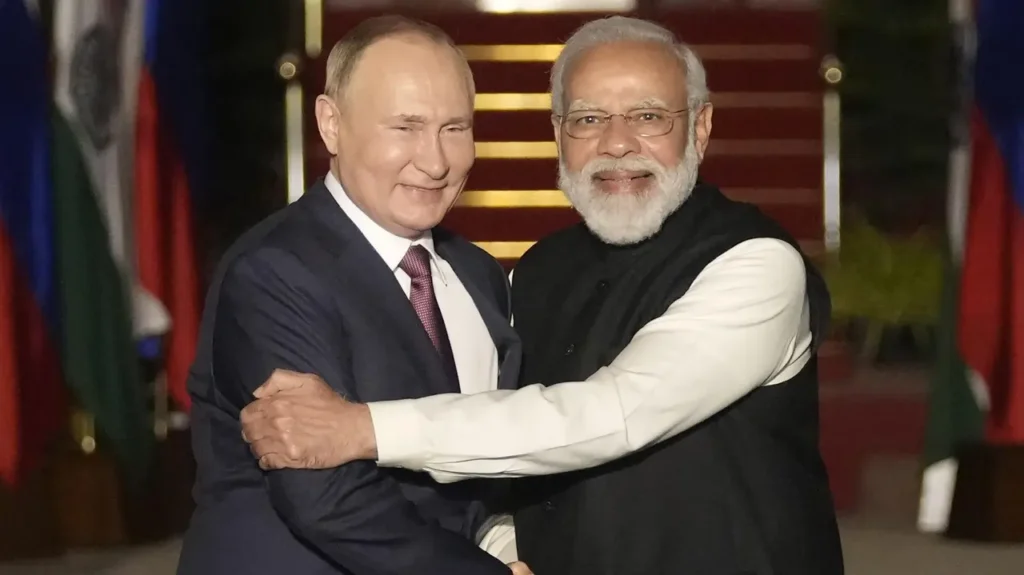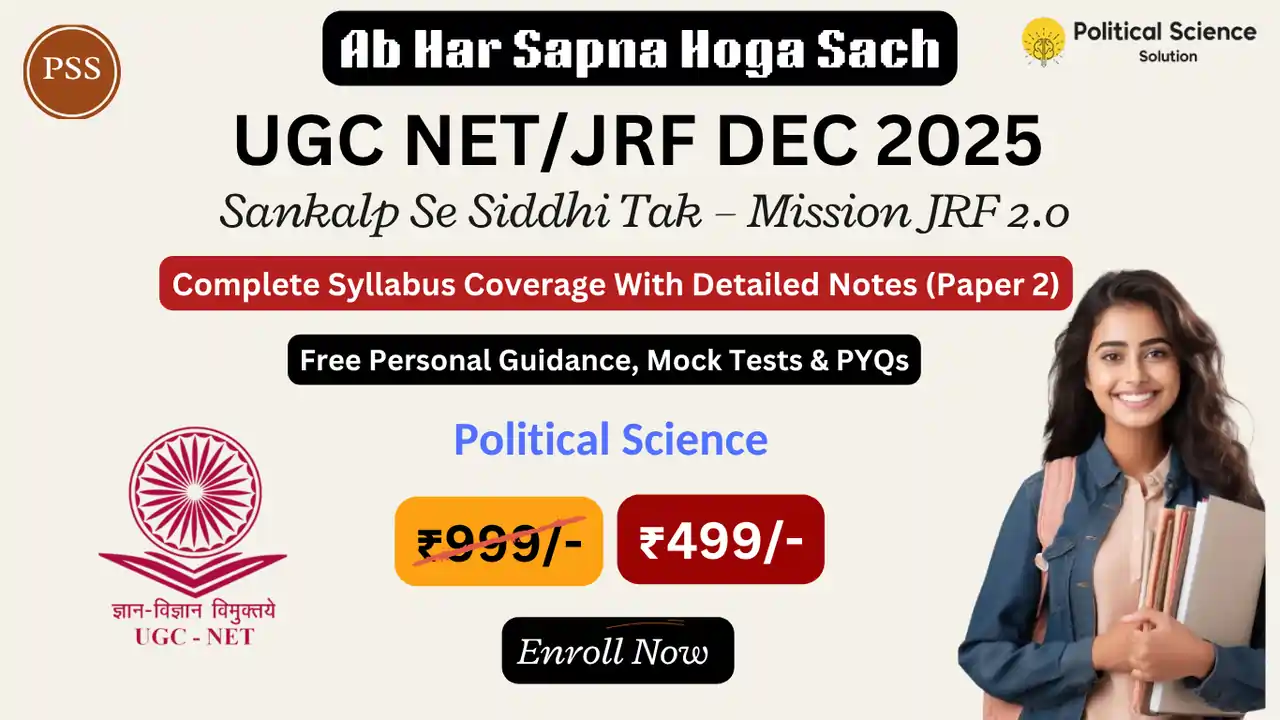New Delhi: In the ever-evolving landscape of global diplomacy, few relationships stand as resilient and multifaceted as the bond between India and Russia. As October 2025 dawns, the world witnesses a significant milestone: the 25th anniversary of the India-Russia Strategic Partnership. This landmark, rooted in the “Declaration on the India-Russia Strategic Partnership” signed in October 2000, has blossomed into a robust alliance encompassing political, security, defense, trade, economic, scientific, technological, cultural, and people-to-people exchanges.

Caption: Celebrating 25 Years of India-Russia Strategic Partnership: A Legacy of Trust, Innovation, and Global Collaboration
The Foundations of a Lasting Alliance: From Declaration to Special Privileged Status
The India-Russia Strategic Partnership was formally inaugurated on October 3, 2000, when Russian President Vladimir Putin and Indian Prime Minister Atal Bihari Vajpayee inked the historic declaration. This agreement marked the beginning of a new era in bilateral relations, setting the stage for enhanced collaboration across diverse domains. Over the years, the partnership has not only endured but thrived, adapting to global shifts and deepening mutual trust.
A pivotal elevation occurred in 2010, when the relationship was upgraded to a “Special and Privileged Strategic Partnership.” This upgrade symbolized an unparalleled level of confidence and joint endeavors between the two nations. Today, this framework continues to guide interactions, ensuring that India and Russia remain aligned on critical issues amid a multipolar world order.
To facilitate ongoing engagement, several institutional mechanisms have been established. At the apex is the Annual Summit-level dialogue, where leaders from both countries convene to review progress and chart future courses. Complementing this is the 2+2 Dialogue, involving the Foreign and Defense Ministers of India and Russia, which focuses on strategic and security matters. Additionally, the India-Russia Intergovernmental Commission oversees cooperation in trade, economy, science, technology, and culture. Military-to-military technical cooperation further strengthens defense ties, fostering joint exercises and knowledge sharing.
These structures have enabled the partnership to weather geopolitical challenges, including economic sanctions, regional conflicts, and shifting alliances. As the world grapples with issues like climate change and digital transformation, India and Russia’s collaborative platforms provide a stable foundation for addressing shared concerns.
Economic Synergies: Trade Milestones and Key Commodities Driving Growth
Economic cooperation forms the backbone of India-Russia relations, with bilateral trade reaching unprecedented heights. In the fiscal year 2024-25, trade volumes soared to a record USD 68.7 billion, reflecting the deepening interdependence between the two economies. This surge is driven by complementary strengths: India’s manufacturing prowess and Russia’s resource abundance.
From India’s side, major exports to Russia include pharmaceuticals, which play a vital role in healthcare supply chains; organic and inorganic chemicals essential for industrial applications; iron and steel products supporting infrastructure development; and marine products that contribute to food security. These exports highlight India’s growing role as a reliable supplier in global markets.
Conversely, Russia’s exports to India are dominated by energy and raw materials. Oil and petroleum products form the largest share, ensuring India’s energy needs are met amid volatile global prices. Vegetable oils, particularly sunflower oil, bolster agricultural trade. Fertilizers aid India’s farming sector, while coking coal fuels steel production. Precious stones and metals add value to jewelry and industrial sectors, rounding out a balanced trade portfolio.
This economic interplay extends beyond mere transactions. Both nations are exploring investment opportunities, with initiatives aimed at diversifying trade baskets and reducing dependencies on third-party markets. As global supply chains realign, India-Russia economic ties offer a model of resilience, emphasizing self-reliance and mutual benefit.
Defense and Security: From Procurement to Innovation-Driven Collaboration
Defense cooperation has been a hallmark of India-Russia ties, evolving significantly over the decades. Initially characterized by a traditional buyer-seller dynamic, where India procured advanced weaponry from Russia, the partnership has transitioned to collaborative models. This shift emphasizes joint research, development, and production of cutting-edge defense technologies.
A prime example is the BrahMos Cruise Missile, a supersonic weapon system co-developed by Indian and Russian entities. This project not only enhances India’s military capabilities but also exemplifies technological synergy, with applications in air, land, and sea domains. Such collaborations extend to other areas, including aircraft, submarines, and missile defense systems, ensuring both nations remain at the forefront of military innovation.
Security dialogues under the 2+2 framework address broader threats, such as terrorism, cyber risks, and regional instability. Joint military exercises, like INDRA, promote interoperability and trust-building. In an era of hybrid warfare, this partnership equips both countries to safeguard their interests effectively.
Multilateral Engagements: Amplifying Voices on the Global Stage
India and Russia’s cooperation extends far beyond bilateral confines, manifesting in key multilateral forums. At the United Nations (UN), both nations advocate for reforms in global governance, supporting each other’s candidacies for permanent Security Council seats. In the G20, they collaborate on economic policies, climate action, and sustainable development.
The BRICS grouping—comprising Brazil, Russia, India, China, and South Africa—serves as a platform for emerging economies to challenge Western dominance. Here, India and Russia push for de-dollarization, infrastructure financing, and technology sharing. Similarly, in the Shanghai Cooperation Organization (SCO), they focus on regional security, counter-terrorism, and economic integration across Eurasia.
These engagements underscore a shared vision for a multipolar world, where diverse perspectives drive international decision-making. By aligning on issues like peacekeeping and non-proliferation, India and Russia contribute to global peace and stability.
Official Commemorations: Statements from Key Figures on the 25th Anniversary
The 25th anniversary has been marked by heartfelt acknowledgments from leaders and diplomats. During a weekly briefing by India’s Ministry of External Affairs (MEA), spokesperson Randhir Jaiswal described October 3 as a “special day.” He recalled the establishment of the Strategic Partnership on October 3, 2000, and celebrated the 25-year journey.
Jaiswal emphasized that India and Russia share a “special and privileged strategic partnership.” He expressed optimism about fortifying ties across all segments, including trade, economic issues, investments, defense relations, and science and technology. “Both sides are committed,” he noted, adding that India anticipates further enhancing economic connections and building upon existing relations.
These remarks align with ongoing preparations for high-level visits. Sources indicate that dates are being finalized for Russian President Vladimir Putin’s trip to India in early December 2025. Preceding this, Russian Foreign Minister Sergey Lavrov is expected to visit to lay the groundwork for the summit and address bilateral matters.
Russian Ambassador to India, Denis Alipov, echoed these sentiments in a post on X (formerly Twitter). He highlighted the signing of the declaration by Putin and Vajpayee on October 3, 2000, as opening a new chapter. Celebrating the 25th anniversary, Alipov described it as a pivotal moment in renewing the historically friendly, comprehensive, and mutually beneficial relationship amid globalization and emerging multipolarity.
Alipov noted that 2025 has been eventful, with numerous bilateral exchanges and a warm leaders’ engagement at the SCO summit in Tianjin. He looked forward to the upcoming bilateral summit in New Delhi, which will also mark the 15th anniversary of the partnership’s elevation to “special and privileged” status.
Russian President Putin, speaking at the Valdai Discussion Club plenary in Sochi, praised Indian Prime Minister Narendra Modi as a “very wise leader who thinks first about his country.” Putin referenced the announcement of the privileged strategic partnership about 15 years ago (aligning with the 2010 upgrade) and affirmed that people in India remember this bond. He reiterated that India and Russia maintain a “special” relationship.
Remarkable Achievements and Emerging Frontiers
Over the past 25 years, India and Russia have achieved milestones in critical sectors. Nuclear power cooperation has advanced energy security, with projects like Kudankulam exemplifying joint ventures. Defense and space exploration continue to flourish, with collaborations in satellite technology and manned missions.
Science, technology, education, and people-to-people exchanges have strengthened cultural bonds. New domains are emerging to address contemporary needs, with innovation at the forefront. Initiatives under the Sirius Educational Foundation and India’s Atal Innovation Mission foster creativity and skill development.
Promising areas include small modular nuclear reactors for sustainable energy, railways and shipbuilding for infrastructure, aircraft construction for aviation, trade corridors like the International North-South Transport Corridor, connectivity projects, Arctic research for climate insights, and labor mobility to enhance workforce exchanges.
These endeavors will be bolstered by the impending Free Trade Agreement (FTA) between the Eurasian Economic Union and India. This pact is poised to elevate bilateral trade to USD 100 billion by 2030, a target set by Putin and Modi in 2024.
Looking Ahead: A Partnership Poised for Greater Heights
As India and Russia commemorate this silver jubilee, the focus remains on expansion and adaptation. The upcoming summit in New Delhi promises to inject fresh momentum, addressing evolving global challenges while capitalizing on mutual strengths.
In a world marked by uncertainty, this partnership offers stability, innovation, and shared prosperity. By prioritizing national interests and collaborative growth, India and Russia are not just allies but architects of a balanced international order.
This anniversary is more than a reflection—it’s a blueprint for the future. As ties deepen, the India-Russia Strategic Partnership will continue to inspire, demonstrating how enduring friendships can navigate the complexities of the 21st century.
Frequently Asked Questions
1. What is the India-Russia Strategic Partnership, and when was it established?
The India-Russia Strategic Partnership is a comprehensive bilateral framework fostering cooperation in political, security, defense, trade, economic, scientific, technological, cultural, and people-to-people domains. It was formally established on October 3, 2000, through the signing of the “Declaration on the India-Russia Strategic Partnership” by Russian President Vladimir Putin and Indian Prime Minister Atal Bihari Vajpayee. In 2010, it was elevated to a “Special and Privileged Strategic Partnership,” reflecting deeper trust and collaboration.
2. What are the key areas of cooperation between India and Russia?
The partnership spans multiple sectors, including:
Political and Security: Regular dialogues through Annual Summits and the 2+2 Dialogue between Foreign and Defense Ministers.
Defense: Evolving from a buyer-seller model to joint research, development, and production, such as the BrahMos Cruise Missile.
Trade and Economy: Bilateral trade reached USD 68.7 billion in FY 2024-25, with India exporting pharmaceuticals, chemicals, and iron & steel, and Russia supplying oil, fertilizers, and precious stones.
Science and Technology: Collaboration in nuclear power, space exploration, and innovation-driven projects.
Multilateral Forums: Close coordination in the UN, G20, BRICS, and SCO.
People-to-People Ties: Cultural exchanges and educational initiatives like the Sirius Educational Foundation and Atal Innovation Mission.
3. What are the major achievements of the India-Russia Strategic Partnership over the past 25 years?
Over the past 25 years, the partnership has achieved significant milestones, including:
- Record bilateral trade of USD 68.7 billion in 2024-25.
- Joint development of advanced defense systems like the BrahMos missile.
- Cooperation in nuclear energy projects, such as Kudankulam, enhancing energy security.
- Progress in space exploration, education, and emerging fields like small modular nuclear reactors, railways, shipbuilding, and Arctic research.
- A target to increase trade to USD 100 billion by 2030, supported by ongoing Free Trade Agreement negotiations with the Eurasian Economic Union.
4. How was the 25th anniversary of the partnership celebrated?
The 25th anniversary on October 3, 2025, was marked by official statements and reflections:
India’s Ministry of External Affairs spokesperson Randhir Jaiswal hailed the “special and privileged strategic partnership” during a weekly briefing, emphasizing plans to strengthen ties in trade, defense, and technology.
Russian Ambassador Denis Alipov highlighted the milestone on X, noting the partnership’s role in advancing bilateral relations amid globalization and multipolarity.
Russian President Vladimir Putin praised Indian Prime Minister Narendra Modi as a “wise leader” at the Valdai Discussion Club, underscoring the “special” relationship. Preparations are underway for Putin’s visit to India in December 2025 and Foreign Minister Sergey Lavrov’s preparatory visit.
5. What is the future outlook for India-Russia relations?
The partnership is poised for further growth, with plans to:
Achieve USD 100 billion in bilateral trade by 2030 through a Free Trade Agreement with the Eurasian Economic Union.
Expand cooperation in emerging sectors like small modular nuclear reactors, trade corridors, and Arctic research.
Strengthen multilateral engagement in forums like BRICS and SCO to promote a multipolar world order.
Host a bilateral summit in New Delhi in December 2025 to mark the 15th anniversary of the “Special and Privileged” status and set new goals for collaboration.

